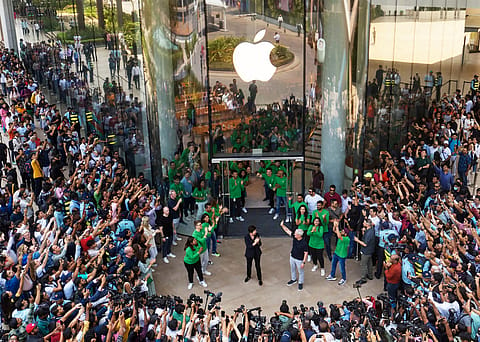Apple’s $11 billion bind with component suppliers
Apple annual report reveals a series of unconditional purchase obligations with suppliers.

Apple, the ubiquitous force in global consumer tech, now finds itself ensnared in a full-blown tariff war, threatening to unravel the delicate threads of its meticulously woven global supply chain. With the White House imposing staggering tariffs—effectively 145%—on all Chinese imports, the cost implications for Apple and its consumers are profound. A constituent of the Magnificent 7 stocks, Apple has lost $880 billion in market cap year till date, with maximum collapse taking place over the past four sessions as the stock tanked below the $200 mark.
While much has been said about Apple’s need to diversify away from China, the real challenge isn’t just about geography—it’s about economics. Shifting a supply chain that took decades to build is no easy feat. What compounds the problem is the magnitude of Apple’s financial entanglements with its existing suppliers.
A review of Note 12 of Apple Inc financial statements by Fortune India shows that Apple has entered into a series of unconditional purchase obligations—primarily related to supplier arrangements, licensed intellectual property, content, and distribution rights—that amount to $11.23 billion in future payments as of September 28, 2024.
The payments are, however, staggered over multiple years: $3.21 billion due in 2025, $2.44 billion in 2026, $1.16 billion in 2027, $3.12 billion in 2028, $633 million in 2029, and $670 million thereafter. While not reflected on the balance sheet, these off–balance sheet commitments are legally binding and represent significant future cash outflows. While the company has robust free cash flows of $98 billion, scrapping supplier agreements won’t be easily given the unconditional payouts, and Apple may incur additional damages.
Apple is heavily dependent on custom and often single-source components. As disclosed in its latest annual report, while most essential components are generally available from multiple sources, certain key parts—especially custom ones used in new technologies—are sourced from a single or limited set of suppliers. Initial capacity constraints, pricing fluctuations, and industry-wide shortages frequently affect availability. Furthermore, Apple competes for many of these inputs with other global players across smartphones, PCs, wearables, and accessories. This concentration risk means that any disruption or strategic redirection by suppliers could leave Apple vulnerable—more so now as it juggles rising tariffs and production relocation plans.
Wedbush Securities' analyst Dan Ives in a report characterised the tariffs as a potential "category 5 price storm" for personal electronics. The notion of relocating manufacturing to the U.S. is impractical; a domestically assembled iPhone could triple in cost, jumping from around $1,000 to a prohibitive $3,500, highlighting the enormous competitive disadvantage posed by significantly higher American labour costs.
Apple, aware of these pressures, has been strategically pivoting towards diversifying production, ramping up manufacturing in countries such as India. However, given the complexity and deeply entrenched nature of its Chinese supply chain, a rapid and seamless transition is improbable.
Recommended Stories
Substantially all of Apple’s hardware products are currently manufactured by outsourcing partners located in China mainland, India, Japan, South Korea, Taiwan, and Vietnam.
This geographic concentration only amplifies the potential fallout of escalating trade tensions even as Apple has managed to ship over $17 billion in exports from India.

